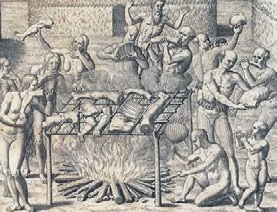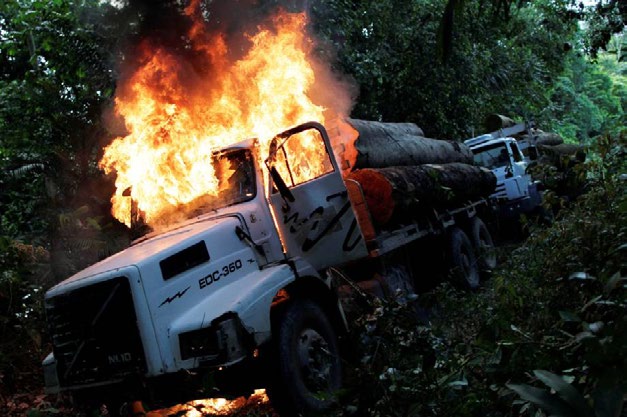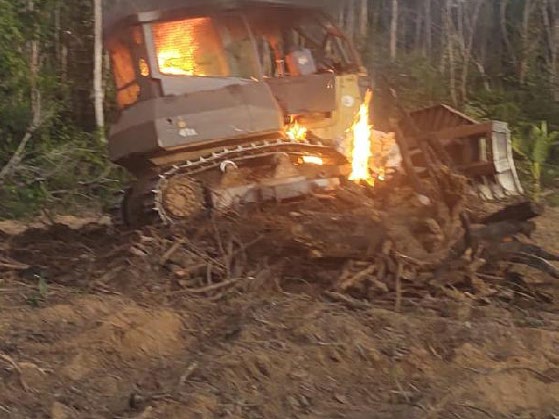


Moquém – Game Meats (2023-2024) is composed of leftover parts from two tractors incinerated by the Federal Police after an inspection operation at illegal mining sites in the Itaituba region, Pará. In the artwork, these burned and melted residues are displayed in a compositional arrangement, under a grid structure. On the pieces, there are specific incisions made with pitch: freehand drawings that evoke patterns found in nature. The title of the work points to the reference that underpins this structure. “Moquém” was the name the Tupi people gave to the wooden grill used to roast meats, whether from animals or prisoners prepared for anthropophagic rituals.

The work happens at the crossroads between the visual and material force of these pieces and the metaphorical and conceptual play. On one hand, it dramatically suggests the swallowing of man by man; on the other, it proposes an archaeology of the future, cataloging and arranging the residues of the human ecological loop. In this sense, it comments on the absurdity of the industrial chain that extracts ore by complex and costly means, only to later use it in the creation of machines designed to extract more ore, which are then destroyed and left worthless in the jungle, to be reabsorbed by the soil, somehow rejoining the mineral in its raw form.




Moquém – Carnes de caça [Moquém – Game Meat], 2023-24
Tractor parts incinerated and melted at mining site in Itaituba, Pará State; steel, iron, plastic, and asphalt
[various dimensions]
Part of the Contemporary Art Museum of São Paulo University Collection
Moquém – Carnes de caça (2023-2024), é composta por peças remanescentes de dois tratores incinerados pela Polícia Federal após uma operação de fiscalização em garimpos ilegais, na região de Itaituba, Pará.
Na obra, esses resíduos queimados e derretidos são expostos num arranjo composicional, sob uma estrutura em grid. Sobre as peças, há incisões pontuais feitas com piche: desenhos livres mas que remetem a padrões encontrados na natureza. O título da obra aponta a referência que fundamenta essa estrutura.
“Moquém” era o nome que o povo Tupi dava a grelha de madeira para assar carnes, sejam de animais ou de prisioneiros preparados para rituais antropofágicos. O trabalho acontece na encruzilhada entre a força visual e material dessas peças e o jogo metafórico e conceitual. Por um lado sugere de modo dramático a deglutição do homem pelo homem, por outro, propõe uma arqueologia do futuro, que cataloga e dispõe os resíduos do loop ecológico humano.
Nesse sentido, comenta sobre o absurdo da cadeia industrial que extrai o minério por meios complexos e custosos, para depois empregá-lo na criação de máquinas utilizadas para extrair mais minério, e que depois são destruídas, sendo largadas sem valor na selva, para serem absorvidas novamente pelo solo, juntando-se de algum modo ao mineral em sua forma bruta.